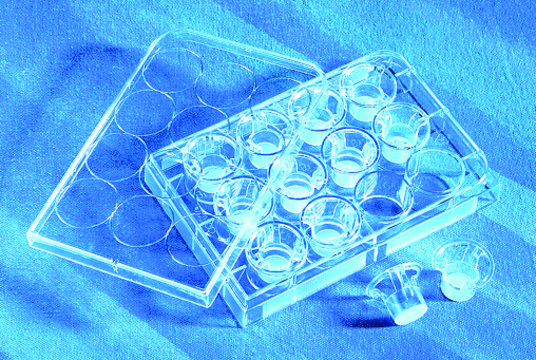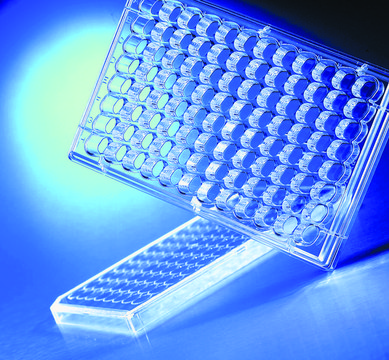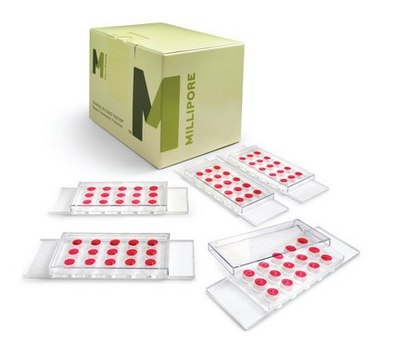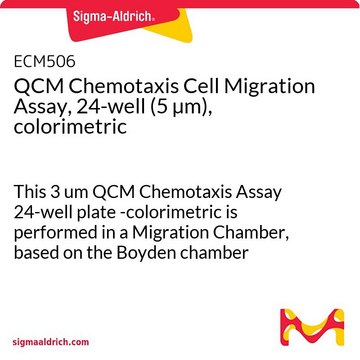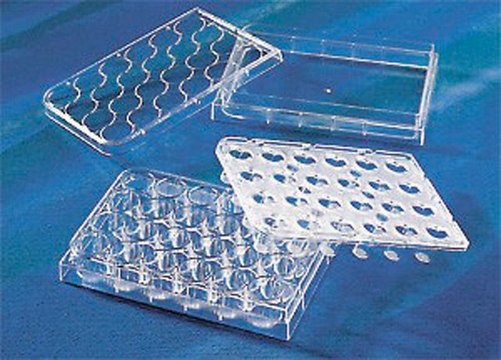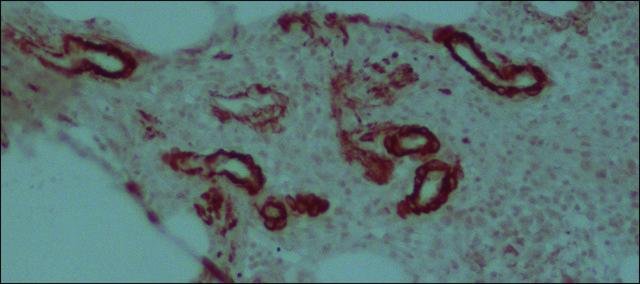General description
Matrix metalloproteinase-9 (UniProt: P14780; also known as MMP-9, 92 kDa gelatinase, 92 kDa type IV collagenase, Gelatinase B, GELB) is encoded by the MMP9 (also known as CLG4B) gene (Gene ID: 4318) in human. MMP-9 is synthesized as inactive proenzyme with a 19 amino acids signal peptide and a 73 amino acids propeptide that are cleaved to generate the active enzyme. MMP-9 is produced by normal alveolar macrophages and granulocytes. It is zinc-binding enzyme that binds two zinc ions per subunit. It can be present as a monomer or a disulfide-linked homodimer. Macrophages and transformed cells usually produce only the monomeric form. MMP-9 contains a conserved cysteine that is present in the cysteine-switch motif and binds the catalytic zinc ion, thus inhibiting the enzyme. The dissociation of the cysteine from the zinc ion upon the activation-peptide release activates the enzyme. MMP-9 plays an essential role in local proteolysis of the extracellular matrix, in leukocyte migration, and bone osteoclastic resorption. It cleaves type IV and type V collagen into large C-terminal three quarter fragments and shorter N-terminal one quarter fragments. MMP-9 expression is regulated by several cytokines and growth factors that induce the expression and/or activation of c-Fos and c-Jun proto-oncogene products, which heterodimerize and bind activator protein-1 (AP-1) sites within of MMP-9 gene promoters. In coordination with other matrix metalloproteinases, it plays a role in normal tissue remodeling events, including neurite growth, embryonic development, angiogenesis, ovulation, mammary gland involution and wound healing. Abnormalities in MMP-9 are associated with a variety of autoimmune diseases, including systemic lupus erythematosus, Sjogren′s syndrome, systemic sclerosis, rheumatoid arthritis, multiple sclerosis, polymyositis and atherosclerosis. Mutations in MMP9 gene are known to cause intervertebral disc disease (IDD) and metaphyseal anadysplasia that are characterized by various skeletal abnormalities.
Specificity
Clone 3D6.3 detects MMP-9 in human spleen. This clone targets a sequence with in 110 amino acids from the C-terminal end.
Immunogen
GST/His-tagged recombinant fragment corresponding to 110 amino acids from the C-terminal of human MMP-9.
Application
Immunohistochemistry Analysis: A 1:1,000 dilution from a representative lot detected MMP-9 in human bone marrow and human tonsil tissues.
Research Category
Cell Structure
This mouse monoclonal Anti-MMP-9 Antibody, clone 3D6.3, Cat. No. MABT531 is tested in Immunohistochemistry (Paraffin) and Western Blotting for the detection of MMP-9.
Quality
Evaluated by Western Blotting in human spleen tissue lysate.
Western Blotting Analysis: 0.5 µg/mL of this antibody detected MMP-9 in 10 µg of human spleen tissue lysate.
Target description
~92 kDa observed; 78.46 kDa calculated. Uncharacterized bands may be observed in some lysate(s).
Physical form
Format: Purified
Protein G purified
Purified mouse monoclonal antibody IgG1 in buffer containing 0.1 M Tris-Glycine (pH 7.4), 150 mM NaCl with 0.05% sodium azide.
Storage and Stability
Stable for 1 year at 2-8°C from date of receipt.
Other Notes
Concentration: Please refer to lot specific datasheet.
Disclaimer
Unless otherwise stated in our catalog or other company documentation accompanying the product(s), our products are intended for research use only and are not to be used for any other purpose, which includes but is not limited to, unauthorized commercial uses, in vitro diagnostic uses, ex vivo or in vivo therapeutic uses or any type of consumption or application to humans or animals.
